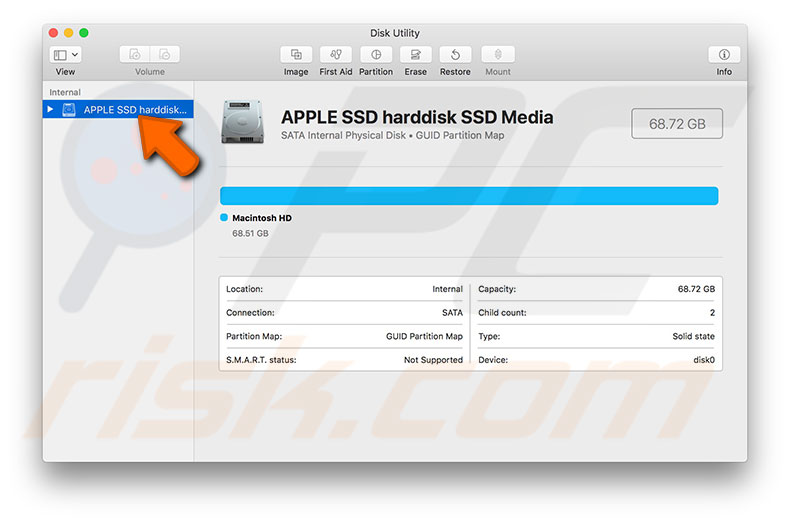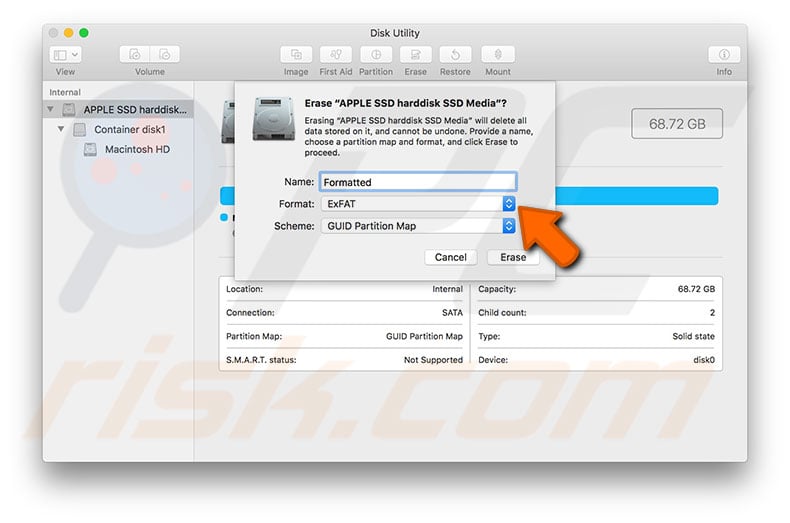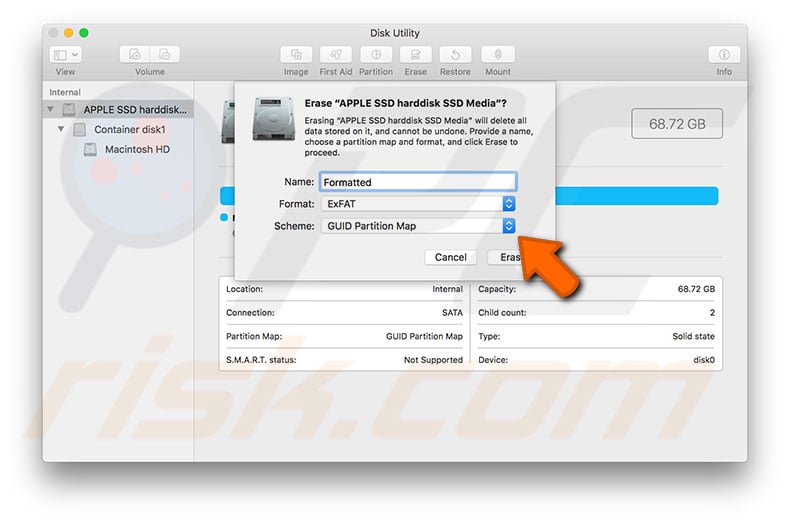How to Format Drive for Mac and Windows?

(updated)
Get Free Scanner and check your computer for errors
Fix It NowTo fix found issues, you have to purchase the full version of Combo Cleaner. Free trial available. Combo Cleaner is owned and operated by Rcs Lt, the parent company of PCRisk.com read more.
How to Format Internal and/or External Drive to Work Properly on Mac and Windows Computers?
External data storage devices such as USB flash drives, external Hard Disk Drives (HDDs), and Solid State Drives (SSDs) provide one of the easiest ways to transfer files between separate computers without accessing the Internet. Despite the advantages of using external data storage to transfer content, some users encounter problems caused by the difference between operating systems.

A common issue users discuss within various technical support forums is that of USB flash drives not working on their computers. This is a cross-platform problem that Windows and macOS users often experience. Windows and macOS use separate file system formats.
Fortunately, there is a simple solution: format your external storage with the File Allocation Table (FAT32) or Extended File Allocation Table (exFAT) file system. This article describes the differences between these two file systems and how to format external storage using a Mac computer.
Video showing How to Format Drive for Mac and Windows Computers?
Table of Contents:
- Introduction
- Which file system to choose, FAT32 or exFAT?
- Format drive with Mac computer
- Video showing How to Format Drive for Mac and Windows Computers?
Download Computer Malware Repair Tool
It is recommended to run a free scan with Combo Cleaner - a tool to detect viruses and malware on your device. You will need to purchase the full version to remove infections. Free trial available. Combo Cleaner is owned and operated by Rcs Lt, the parent company of PCRisk.com read more.
Which file system to choose - FAT32 or exFAT?
As mentioned above, both file systems are compatible with Windows or macOS/OS X operating systems. Naturally, the question is: which should you choose? To make a choice easier, we describe both file systems and their features below.
FAT32
Starting with FAT32 [on a Mac, known as MS-DOS (FAT)], this file system is fully compatible with all versions of Windows and Mac operating systems. Even the oldest versions of operating systems such as Windows XP SP1 and OS x 10.5 Leopard are compatible. The FAT32 file system is supported by PlayStation 3, Xbox 360, and most cameras.
This particular file system does contain file size restrictions. For example, the maximum size of supported files is 4GB (you cannot write files larger than 4GB). Also, you cannot create a startup drive for Mac computers within storage media that uses the FAT32 file system.
If you are not planning to use external storage to transfer large files or create any executable partitions (such as a Mac startup drive), the FAT32 file system might be an option since this format is supported in all versions of the operating system.
exFAT
exFAT is a newer file system format and has the biggest advantage compared to FAT32: there are no restrictions on file or partition sizes stored. Therefore, you can write a file of, for example, 1TB size and create partitions of 5TB within the device.
Despite this improvement of available data size, some older versions of operating systems are no longer compatible with this file system format. The oldest versions of operating systems compatible with exFAT are listed below:
- Mac OS X Snow Leopard 10.6.5 or later
- OS X Lion
- Windows XP SP2 or later (with an additional update for exFAT support)
- Windows Vista SP1 or later
- Windows 7
Unfortunately, as well as some old versions of operating systems, the exFAT file system format are not supported by various cameras, video games consoles, and other devices that can read and/or write to external storage.
If you will be using a USB flash drive or external storage device with any of these, the required format is FAT32. Otherwise, if the device is to be used only with computers with modern versions of operating systems, the recommended format is exFAT.
Format the drive with Mac computer
Firstly, bear in mind that formatting the drive will erase all content stored on it. Mac computers are capable of formatting any storage device (internal or external) such as HDD/SSD, USB flash drive, and external storage. Even if the Mac cannot mount the storage, following this method will enable you to format the storage.
1. Begin by connecting the storage device to your Mac, and then launch Disk Utility using Spotlight. Simply use the keyboard shortcut of Command and Spacebar, type Disk Utility, and then press return.
Alternatively, open Finder and go to Applications, open Utilities, and then launch Disk Utility.
2. Select the drive you wish to format from the list in the left sidebar of the Disk Utility window.

3. Then click the Erase button at the top of the window, in the new pop-up window, and type the drive's name.
4. Then click the drop-down menu beside Format and select MS-DOS (FAT) - the FAT32 file format - or exFAT. These formats are described above.

5. If you are not planning to use this drive as the Windows startup disk or use it with the oldest version of the operating system, do not change the Scheme. Select Master Boot Record.

6. Finally, when all preferences are set, click the Erase button.
The formatting process duration depends on the size and type of the drive. A hard disk drive will take longer to format than a flash drive.
Note: Formatting will erase all existing data on the drive.
Share:

Karolina Peistariene
Author of how-to guides for Mac users
Responsible for collecting, analyzing, and presenting problem-solving solution articles related to macOS issues. Years of macOS experience combined with solid research and analyzing skills help Karolina provide readers with working and helpful solutions as well as introduce various features Mac has to offer.
▼ Show Discussion